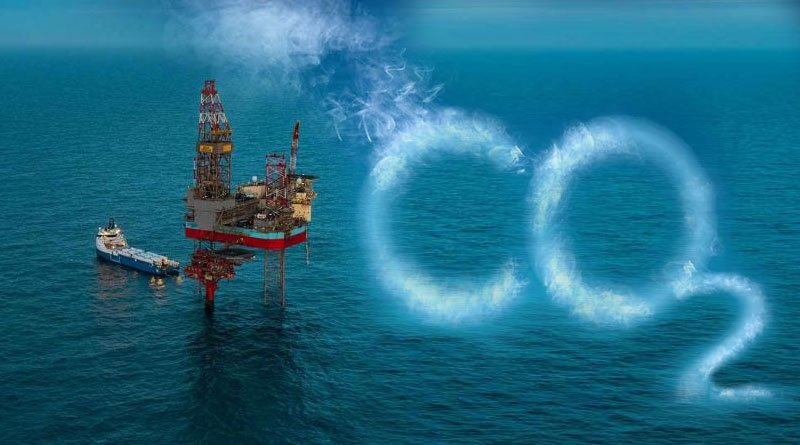Carbon from Greensand project is shipped in special containers to Nini West platform, where it is injected into a pre-existing reservoir that is located 1.8 km beneath surface of ocean.

The “Greensand” project, led by German oil company Wintershall Dea and British chemical giant Ineos, aims to store up to eight million tons of CO2 annually by 2030. It was granted an operating permit in December to begin its pilot phase.
Denmark, the first nation in the world to bury CO2 imported from abroad, launched a project on Wednesday to store carbon dioxide 1,800 metres beneath the North Sea. On the site of a former oil field is the CO2 graveyard, where the carbon is injected to stop the atmosphere from warming any further.
Carbon capture and storage (CCS) projects, which are still in the early stages and expensive, aim to capture and then trap CO2 to reduce global warming.
In Europe, there are currently 30 active or planned projects. However, the Greensand project stands out by bringing in the carbon from a great distance, unlike other projects that store CO2 emissions from nearby industrial sites.
The CO2 is first captured at the source, liquefied, transported (currently by ship, but potentially by pipelines in Greenland’s case), and then stored in reservoirs like geological cavities or exhausted oil and gas fields.
The carbon from the Greensand project is shipped in special containers to the Nini West platform, where it is injected into a pre-existing reservoir that is located 1.8 kilometres (1.1 miles) beneath the surface of the ocean.
The neighbouring Siri field will also be used after the pilot phase is finished. This is “a much needed tool in our climate toolkit,” according to Danish authorities, who have set a goal of becoming carbon neutral by 2045.
It will assist us in achieving our climate goals, and since our subsoil has a storage capacity far greater than that of our own emissions, we are also able to store carbon from other nations, according to Climate Minister Lars Aagaard, who spoke to AFP.
The North Sea is suitable for this type of project as it has pipelines and potential storage sites after decades of oil and gas production. Morten Jeppesen, director of the Danish Offshore Technology Centre, and France’s TotalEnergies are exploring the possibility of burying CO2 with the aim of trapping five million tonnes per year by 2030.
In Norway, carbon capture and storage facilities are already in operation to offset domestic emissions, and the country will receive tonnes of liquefied CO2 in a few years’ time.
As Western Europe’s largest producer of oil, Norway has the largest potential for CO2 storage, but the quantities stored still remain a small fraction of overall emissions.
According to the European Environment Agency (EEA), the EU emitted 3.7 billion tonnes of greenhouse gases in 2020 alone, a year that also saw reduced economic activity due to the Covid-19 pandemic.
The UN’s Intergovernmental Panel on Climate Change (IPCC) and the International Energy Agency have embraced carbon capture as a necessary technology after it was previously seen as a complex solution with limited application (IEA). But it’s still a long way from a magic solution to the global warming problem.
According to the Australian think tank IEEFA, the energy-intensive process to capture and store the CO2 itself emits the equivalent of 21% of the gas captured. The think tank also warns that the technology carries some risks and that any leaks could have negative repercussions.
The project’s cost hasn’t been made public, either. “As the industry matures, the cost of CO2 storage must be further reduced so that it will become a sustainable climate mitigation solution,” said Jeppesen. Environmentalists are also opposed to the technology. “It doesn’t fix the problem and prolongs the structures that are harmful,” Helene Hage, head of climate and environmental policy at Greenpeace Denmark, told AFP.
“Our deadly habits are not being changed by the method. Denmark should examine the industries that are producing the most emissions if it is serious about cutting them “She specifically mentioned the transportation and agricultural industries.
